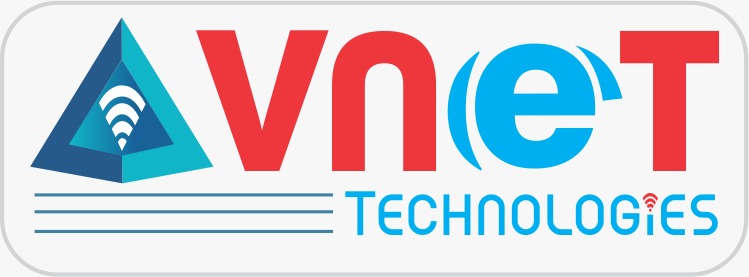India's Best Tally Prime & GST Training with Placement
4.8 Out of 5 Based on 1201 Reviews
Welcome to a leading Tally Academy and an Authorized Tally Partner (TEPL) Tally Education Pvt Ltd. for Coimbatore Covering Tally Prime, inventory management, financial management, and GST compliance, this course equips you with essential knowledge and practical experience to excel in today’s competitive accounting environment
- Gain expertise in Tally Prime
- Learn Inventory
- Financial Management Skills
- Understand GST
- Compliance and Taxation Processes
- Enhance Career Opportunities in Accounting Roles

Tally Course
Tally Prime Expert Training Course covers in-depth knowledge to meet the accounting requirements of the industry. We not only teach the concepts but also help you learn; how you can Practically implement those concepts in your Accounting Process with Practical Examples in tally software. Tally Online Course includes Accounting, Inventory, Taxation, GST, Return Filing, Finalization of Books of Accounts, MIS Reporting and Auditing in Tally.
Our Training Methology
A typical Tally Prime training methodology focuses on a hands-on, practical approach where students learn by actively performing real-world accounting tasks within the software, covering aspects like company creation, ledger setup, voucher entry, inventory management, GST, in board compliance, and generating reports, often with a blend of theoretical explanations and interactive exercises to ensure comprehensive understanding across different business scenarios
TALLY Certification Course
Course Title
Syllabus
Exam Mode
Certification
Tally Level 1
From Fundamentals to Reporting with GST
Online Exam
Verifiable Digital Certificate
Tally Level 2
Accounts Payable and Receivable
Online Exam
Verifiable Digital Certificate
Tally Level 3
Taxation and Compliance
Online Exam
Verifiable Digital Certificate
Tally Essential Comprehensive
Syllabus covers all Above three Levels
Online Exam
Verifiable Digital Certificate
Payroll
Basic to Advanced in each field
Online Exam
Verifiable Digital Certificate
Why Student prefers V Net Academy for Tally Training

- Flexible Timings:
- Students: Timings structured to fit seamlessly with academic schedules.
- Working Professionals: Sessions planned to complement busy work routines.
- Homemakers: Convenient slots designed to balance family responsibilities.
- Weekend classes available for added flexibility.
- Affordable Investment
- High-quality training at a cost-effective price.
- Holistic Learning
- Comprehensive blend of theoretical knowledge and hands-on practical experience.
Key Elements of a Tally Prime Training Methodology
Foundational Concepts
Starting with core accounting principles like debits and credits, understanding the chart of accounts, and proper ledger creation.
Master Data Setup
Demonstrating how to set up essential master data like customer and vendor details, stock items, and bank accounts.
Voucher Entry Practice
Extensive practice with different types of vouchers including sales, purchase, payment, receipt, journal entries, and their application in various business situations.
Inventory Management
Covering stock group creation, item details, stock entry, stock adjustments, and generating stock reports.
Taxation and GST
Detailed explanation on GST configuration, recording GST transactions, and generating GST returns.
Payroll Processing
Setting up payroll masters, calculating salaries, deductions, and generating payroll reports.
Financial Reporting
Generating various financial reports like trial balance, profit and loss statement, balance sheet, and customized reports based on specific business needs.
Practical Case Studies
Applying Tally Prime to solve real-world business scenarios, including scenarios related to different industries.
Hands-on Exercises
Providing ample opportunities for students to practice entering data, navigating through the software, and generating reports on their own.
Customization and Advanced Features
Exploring advanced functionalities like features for manufacturing, job costing, and integration with other systems.
Classroom Training
Instructor-led sessions with live demonstrations and Q&A in a traditional classroom setting.
Online Training
Virtual classes with interactive features, enabling flexible learning from anywhere.
Who can Join the Tally Course

Key Points about Becoming a Tally Prime Accountant :
- Master Financial Management – Gain expertise in bookkeeping, taxation, and financial reporting.
- Enhance Career Opportunities – Unlock job roles in accounting, auditing, and business finance.
- Automate Business Operations – Streamline invoicing, payroll, and inventory management efficiently.
Who Might Benefit from Learning Tally Prime:
- Aspiring Accountants & Finance Professionals – Build essential skills for careers in accounting, taxation, and financial management.
- Entrepreneurs & Business Owners – Manage finances, track transactions, and optimize business operations effortlessly.
- Job Seekers & Career Switchers – Boost employability with in-demand accounting expertise for diverse industries.
Define Your Training Modules
Our Training Levels
We can train
our Infrastructure
Pricing & Duration
Certification & Job Assistance
- Beginner Level – Covers fundamental accounting concepts, Tally Prime basics, and essential financial operations.
- Intermediate Level – Focuses on advanced accounting features, taxation, payroll management, and financial reporting.
- Expert Level – Includes GST compliance, inventory management, data security, and real-world business applications.
- Students & Graduates – Build a strong foundation in accounting and financial management.
- Working Professionals – Enhance expertise and career prospects in finance and taxation.
- Entrepreneurs & Business Owners – Learn to manage accounts, taxation, and business transactions efficiently.
State-of-the-Art Computer Labs – Equipped with the latest Tally Prime software for hands-on practice.
Interactive Classrooms – Smart learning spaces with projectors and high-speed internet.
Student Support Services – Access to study materials, faculty guidance, and technical assistance.
- Affordable Fee Structure – Cost-effective training with flexible payment options.
- Course Duration – Varies from 4 to 12 weeks, depending on the training level.
- Customized Learning Plans – Weekend and fast-track options available for convenience.
- Industry-Recognized Certification – Earn a valuable credential upon course completion.
- Placement Support – Assistance with job opportunities in accounting and finance sectors.
- Interview Preparation – Resume building, mock interviews, and career guidance for job readiness.
Benefits of Tally Training through VNET ACADEMY
- Our Syllabus are framed in International Standard
- Experienced Mentor Supports
- Hybrid Model of Teaching (both Online and Off line)
- LMS Supports (Recorded Videos)
- Online Mock Tests and Assessments
- Verifiable Digital Certificate
- Resume Building and Mock Interviews
- Life Time Access to Tally Job Portal
- Pan India Placement Assistance
- Multiple Career Opportunities
What you Learn
- Tally Prime Latest Software
- GST accounting and Filing
- Tax Deducted at Source (TDS)
- Payroll Management
- Income Tax
- Management of Business Data
- Advanced Banking Transactions
- Manufacturing and Job Costing
- Live Classes by Industry Experts
- Learn from Scratch to Advanced
- Industry Based Syllabus
Tally course Syllabus
Tally Essential Level 2
Chapter 1: Storage and Classification of Inventory 4
1.1 Introduction
1.2 Supply Chain
1.2.2 Types of Suppliers
1.3 Inventory Management
1.3.1 Terms Used in Inventory Management
1.4 Inventory Masters in TallyPrime
1.4.1 Company Creation in TallyPrime
1.4.2 Introduction of Capital into a Business
1.4.3 Creation of Inventory Masters in TallyPrime
1.5 Tracking of Movements of Goods in Batches/Lots
1.5.1 Activation of Batches/Lots for Stock Items
1.5.2 Batch Reports
1.6 Price Levels and Price Lists
1.6.1 Activating Price Lists and Defining of Price Levels
1.6.2 Creation of Price List
1.6.3 Price Level &Price List usage in Sales Voucher
1.6.4 Revise Price List
Chapter 2: Accounts Receivable and Payable Management 6
2.1 Introduction
2.2 Accounts Payable and Receivable
2.3 Maintain Bill-wise Entry
2.4 Activation of Bill-wise Entry
2.4.1 Usage of Bill-wise entry in Purchase and Payment Voucher
2.4.2 Usage of Bill-wise entry in Sales and Receipt Voucher
2.4.3 Usage of Bill-wise entry in Payment and Receipt Voucher
2.4.4 Usage of Bill-wise entry - On Account
2.5 Specifying of Credit Limit for Parties
2.5.1 Specifying Credit Limit for Individual Ledger
2.5.2 Specifying Credit Limit for Multiple Ledger
2.5.3 Sales Voucher Restriction Based on Credit Limit
2.6 Splitting of Credit Sale Into Multiple Bills
2.7 Payment Performance of Debtors
2.8 Bills Payable and Receivable Reports in TallyPrime
2.8.1 Bills Receivable
2.8.2 Ageing Analysis of Outstanding
2.8.3 Generating Reminder Letter in TallyPrime
2.8.4 Generating Confirmation of Accounts in TallyPrime
2.8.5 Bills Settlement
2.8.6 Bills Payables
Chapter 3: Purchase and Sales Order Management 6
3.1 Introduction
3.2 Purchase Order Processing
3.2.1 Recording of Purchase Order
3.2.2 Recording of Receipt Note Voucher
3.2.3 Recording Rejections Out Voucher
3.2.4 Recording Purchase Voucher
3.2.5 Recording Debit Note Voucher
3.2.6 Recording Payment Voucher
3.3 Sales Order Processing
3.3.1 Recording of Sales Order In TallyPrime
3.3.2 Recording Delivery Note Voucher
3.3.3 Recording Rejections In Voucher
3.3.4 Recording of Sales Voucher
3.3.5 Recording Receipt Voucher
3.4 Order Outstandings
3.4.1 Sales Order Outstanding
3.4.2 Purchase Order Outstanding
3.4.3 Pre-Closure of Orders
3.5 Reorder Level
3.5.1 Display Reorder Status
3.6 Godown Transfer in TallyPrime
Chapter 4: Tracking Additional Costs of Purchase 2
4.1 Introduction
4.2 Configuration of Additional Cost of Purchases in TallyPrime
4.2.1 Purchase Transaction with Additional Cost Details in Voucher Mode
4.2.2 Purchase Transaction with Additional Cost Details in Item Invoice Mode
4.2.3 Debit Note Voucher with Additional Cost
Chapter 5: Cost/Profit Centres Management 4
5.1 Introduction
5.2 Cost Centre and Cost Categories
5.2.1 Activation of Cost Centre
5.2.2 Allocation of Expenses and Incomes using Cost Centre
5.2.3 Cost Centre Classes (Automatic Allocation)
5.2.4 Allocation of Expenses to Multiple Cost Centres and Cost Categories
5.3 Cost Centre Reports
5.3.1 Category Summary
5.3.2 Cost Centre Break-up
5.3.3 Ledger Break-up
5.3.4 Group Break-up
Chapter 6: Budgets and Scenarios 4
6.1 Introduction
6.2 Creation of Budget
6.3 Recording Transactions
6.4 Display Budgets and Variances Reports for Group Budget
6.5 Scenario Management
6.5.1 Creation of Scenario
6.5.2 Temporary Inclusion of Reversing Journal Voucher In the Reports.
Chapter 7: Generating and Printing Reports 4
7.1 Introduction
7.2 On the Fly Reporting
7.2.1 Bird’s eye View/Drill Down Display
7.2.2 Drill Down Display
7.2.3 Date/Period Based Reporting & Comparing
7.3 Inventory Reports
7.3.1 Stock Summary
7.3.2 Godown-wise Stock Availability
7.3.3 Movement Analysis
7.3.4 Stock Query
7.4 Financial Reports
7.4.1 Balance Sheet
7.4.2 Profit & Loss A/c
7.5 Books & Registers
7.5.1 Sales Register
7.5.2 Purchase Register
7.6 Printing of Invoice and Report
Chapter 8: Goods and Services Tax 4
